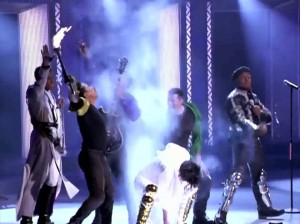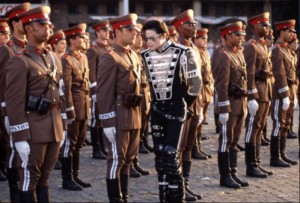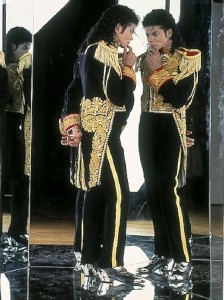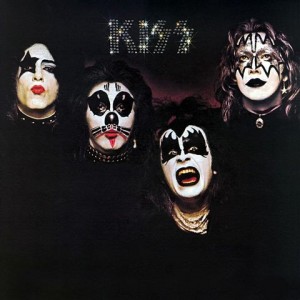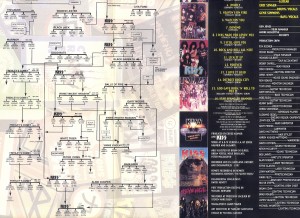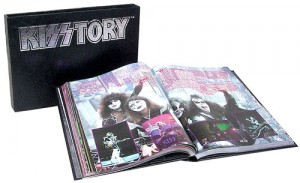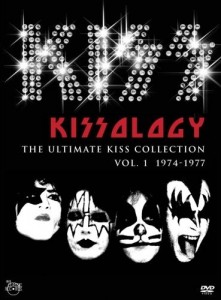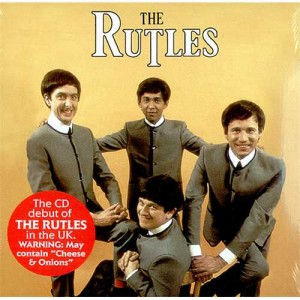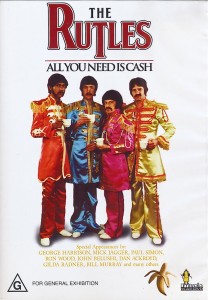
Definition sticklers will call me out on my use of the term “pop” when really I mean rock, pop, R&B, etc., but pop or popular is a nice umbrella term for the mainstream acts I’m referring to. Bands who have actively worked at historicizing themselves or to build their own mythology is fascinating. Rock n roll used to be thought of as a young person’s game or was associated with some type of rebellion. Today it is expected there will be an initial band 15 minutes of fame, then a solo album, break-up, big money making reunion, and tasteful, nearly annual reunions to pad the retirement nest egg or children’s college funds. Simply put, before it was institutionalized and generally humans’ lifespans became longer, pop, rock, or whatever could have just been something that occurred for two or three years during your early twenties. “Say something once, why say it again?” – David Byrne.
But this changed and we began to see bands actively building their own histories. For this short pilot of an essay, I choose the following as my case studies: the Beach Boys (1961-present), Michael Jackson (1958-2009), KISS (1973-present), and via parody, The Rutles (1975-intermittently through-2002). Each of these examples shows a performer mythologizing or historicizing a particular element of their performance persona.
If we focus solely on the performer’s music, there are many examples today of singers and bands consciously aping their earlier or original style in order to regain popularity, increase sales, or attempt to reignite the particular authenticity that originally brought them notice. Cruder or mediocre attempts in this vein can generally be filed in shallower container of nostalgia or retro. This is not quite the same as mythologizing or historicizing, though it can play a smaller part in these larger concepts.
In the case of The Beach Boys, there are certainly numerous examples, especially later in their career, of usually Mike Love-led attempts to practically imitate themselves and lock themselves back into the early 60s bubble of upbeat surf-based songs. As early as 1968, after their first career decline, they released Do It Again. Though the audio didn’t match the visuals with their late 60s long hair, beards, and white suits .
As driving force in the band Brian Wilson continued to suffer with addictions and The Beach Boys delivered surprisingly fresh, though commercially disappointing, albums (see Sunflower (1970), Surf’s Up (1971), Carl and the Passions – “So Tough” (1972), and Holland (1973) ), increasingly Mike Love, Al Jardine, and Bruce Johnston went back to the well of nostalgia. However, sonic nostalgia – as I mentioned above – doesn’t equal creating your own history or mythology. The Beach Boys truly achieved that by constructing a direct parallel between their band and the season of summer. This really locked in between 1980-1982 when the group began performing Independence Day concerts on the National Mall in Washington, D.C. as part of a neo-conservative wave ushered in by Ronald Reagan’s presidency and a hangover-like fatigue from 1970s Vietnam War, oil shortages, and hostage situation. Respectable institutions have long histories defined by a consistent output of quality and that is what The Beach Boys aspired to become. This was no longer the Brian Wilson-led band who released songs such as Caroline, No (1966) and Heroes and Villains (1967). The Beach Boys mythologized a season and a time (post-war early 1960s) whereas Michael Jackson was relatively focused on the present musically throughout his career and left the mythologizing for live performance and curated imagery.
Michael Jackson was only eleven years old when the group he led, the Jackson 5, released their single I Want You Back on October 7, 1969. He grew up in the last vestiges of Old Hollywood, learning and internalizing its rules. His upbringing was not that of the New Hollywood portrayed in Peter Biskind’s Easy Riders, Raging Bulls (1998). His world – one he both literally knew and revered – was filled with Diana Ross, Elizabeth Taylor, and Gene Kelly. His Hollywood was one with a distance between front stage and back stage, between audience and performer, public behavior and private behavior. To demarcate the line between performer and regular Joe was to be bigger, flashier, more outrageous – on stage – then a normal person, to use and display your power. So, while we can never make the case for self-mythology or base nostalgia within his music – except 2001’s “You Rock My World” from his last album Invincible – his stage presence and image are rife with it.
One of the earliest examples is from the 1980 The Jacksons album Triumph. Four years earlier, the group left Motown for Epic/CBS records. With the move Jermaine Jackson left the group and stayed with Motown to be replaced by younger brother Randy. One year prior to Triumph (1980), Michael scored his first big solo hit as an adult with his 1979 album Off The Wall. So, the goal was to look big, important, to continue the winning ways. The Jacksons, for their single from Triumph, “Can You Feel It” LITERALLY did this by portraying themselves a ethereal giants across the cosmos.
As Michael Jackson hit it even bigger in 1982 with his album Thriller money and performance aspirations quickly increased. Across both his solos tours and last tours with his brothers, the choreography increasingly included more “power” stances usually while standing atop a fan-vent blowing dramatic smoke up and around the performer. While such stage stances are certainly no stranger to the rock dynamic between a lead singer and lead guitar player (ideal type would be Roth/Van Halen), The Jacksons are not merely conveying the emotion of the song, but rather constructing an image of power and resiliency reserved for statuary composition rather than a pop-star.
During the late 1980s and into the early 1990s, increasingly Michael Jackson wore royalty and military inspired jackets and pants. He would often have himself photographed with local military and police from the countries he was performing in. It was a convenient arrangement for stage craft – he could say – and at certain times in his career he was being honest – that he needed such local security and of course the photo out of context spoke volumes – “Michael Jackson Leads Army.”
By the mid-1990s, Michael Jackson was under investigation for child sexual abuse and needed damage control. All guns, so to speak, were fired: a marriage to the daughter of Elvis Presley, a greatest-hits package combined with a new album, and that album’s title was “HIStory: Past, Present, and Future, Book 1” (1995) with the image of a giant statue of Michael Jackson on its cover. Fighting for his career created his penultimate attempt at self-mythologizing via image.
To state the obvious, this image tells us Michael Jackson is important enough, and has been important long enough to have a history with a capital “H”. Also, history, that big important subject that everybody takes seriously, well, it is actually “HIS” story because again, he is really important. Not only has he been important in the past, but the subtitle informs us that he is also VERY important today, and will continue to be important in the future. His story is so revered that this is no mere PR release or trashy audio tell-all, but a “book”, almost religious if you will, and long because this is only the first. Behind the text is a pseudo-royal crest spelling out his initials, “MJ”. How revered is pop star Michael Jackson? Well, they built a statue so tall it needs dramatic flood lights to illuminate it against a very powerful and dramatic sky. Such image work would eventually no longer work in a post-internet, social media world Michael inhabited for the last ten or so years of his life, but unfortunately Michael still played by the rules of Old Hollywood that he was trained in. It didn’t quite get it; the moat between fan and performer had quickly eroded. Michael Jackson’s efforts alone probably support my point regarding band’s conscious intentions at self-mythologizing and historicizing themselves, but nonetheless would be incomplete without the band who literally wrote a history book about themselves, KISS.
Conceptualizing rivaling Michael Jackson in their inherent understanding that projecting an image of being “larger than life” equals success, KISS traded on their mystique and mythology almost from day one. First, of course, is their makeup that acts like a mask. Masks can act as symbols. We often assign greater meaning to such symbols. So, right out of the gate in 1973, these were not simply a slightly-better than bar band foursome – there MUST be something more to them because the mask acts as a symbol to be decoded and begs us to ask “who are they really?”
The mythology built when their first three studios albums failed to sell in 1974 and 1975 but word of mouth said “they were amazing live”. This led their manager Bill Aucoin to gamble and release a double-live album (like other “live” albums, it was perfected in the studio in order to live up to the building mythology) and it paid off: Alive! (1975) was certified gold and truly launched their careers. Buying wholeheartedly into their manager focus on visuals and perception, the band at the height of their career released a greatest hits package titled Double Platinum (1978). Other bands might have worried that essentially titling an album “two million sold” might set them up for embarrassment if sales were poor (and this album actually did only sell one million), KISS understood the value of self-mythologizing. This strategy would eventually provide diminishing returns, especially for bassist Gene Simmons, but in the beginning, it built the band.
The first cracks in this strategy are well detailed in C.K. Lendt’s wonderful book Kiss and Sell: The Making of a Supergroup (1997) beginning with the group’s 1979 tour in support of their album Dynasty in which the group began hemorrhaging money due to the manager and the band working under the delusion that everything had to be “SuperKISS”. Career-wise, the band first bottomed out in 1982 as they were viewed as an over-promoted, over-commercialized “dinosaur” act who couldn’t rival the then beginning new-wave of 80s heavy and glam metal. This didn’t stop them from attempting the old strategy by promoting a small contingent of citizens who protested one of their poorly-attended concert stops by saying the band’s name stood for Knights in Satan’s Service. In that moment they were not a tired old act attempting to slough through an abysmally attended tour but rather a “dangerous” rock n roll band who got protested and hopefully would now be more appealing to the youth demo in small town USA.
However, it was truly the makeup again that helped build the mythology and mystique – or rather the taking off of the makeup in 1983 for their surprisingly successful Lick It Up album. By taking off the makeup, the band essentially hermetically sealed a portion of their career and bifurcated their past between “makeup” and “non-makeup”. By only existing in the past, during the by-gone days of a 1970s defined by arena rock and disco, the footage of the makeup days seemed like a portal into another planet. The makeup element of their performance began to perform double-duty for Paul Stanley and Gene Simmons. Its absence allowed them to appear contemporary and be an active, working rock band during the 1980s. It also acted as a special historical treasure trove that Paul and Gene could reach into occasionally in a pre-internet world in discreet dollops either to an appreciative long-time fan or curious young newcomer.
This began in 1987 with the long-form video VHS release KISS:Exposed intercut the band’s contemporary MTV videos with 1970s makeup footage. Similar to Michael Jackson’s child sexual abuse charges propelling him to self-mythologize, KISS hit their second career nadir from roughly 1993 to 1995. A combination of their natural aging, death of a band member (Eric Carr), and changing musical tastes left the band without a forward direction, so they went back. The first inkling of this course appeared in their 1993 live album Alive III (itself a part of a self-aware trilogy). The accompanying compact disc (CD) booklet contained both contemporary and archival band imagery along with a musical family tree of band members and which bands they played in.
This purposeful historicizing of the band continued in March 1995 with the release of the 440-page hardbound “bible” Kisstory for $149.99 and a 27-show “KISS Convention” tour. The tour was essentially the band’s own mini-touring museum featuring props, costumes, and other artifacts mostly from the 1970s combined with a live acoustic set from the band. This was followed in 1996 with an acoustic set on MTV’s Unplugged television program with former members Ace Frehley and Peter Criss which led to a full in-makeup stadium worldwide tour in 1996-1997. The band continued to archive itself in 2000 with its 435-page updated sequel to their Kisstory book, Kisstory II. These were later followed by a trilogy of DVD box-sets featuring restored concert footage from all the band’s various eras and lineups in 2006 and 2007 titled Kissology volumes 1-3.
It is important to differentiate here the forces occurring around the rock band KISS during the 1990s. On one side, you have the band actively constructing and promoting a history of themselves that builds upon the mythology they had always been working on since the start of their career. On the other side – perhaps the audience, perhaps the industry – embracing or seeking out a nostalgia that for some included KISS during their initial popularity in the 1970s. It is this side that produced the 1994 album Kiss My Ass: Classic Kiss Regrooved where various popular contemporary artists covered classic KISS songs. I’m sure Gene Simmons and Paul Stanley were only too happy to help a new generation venerate them and support their work in making their own history significant. It is also this nostalgia side that placed KISS songs on the soundtracks of Bill & Ted’s Bogus Journey (1991), Dazed & Confused (1993), and Speed (1994). The important point, I think think, is to remember that all of this can not be understood solely by nostalgia or a retro-craze on their own. Rather, it is a conscious effort on the part of performers to historicize and mythologize themselves. This can cause an uptick in nostalgia, it could be caused by an uptick in nostalgia, or they may never actually intersect with one another. There is no one way that it necessarily unfolds, and in fact, one case study – The Rutles (1978) shows parody of the band, rather than the band itself, can perform the same function.
It seems silly to introduce them, but as this YouTube video shows, some of today’s youth really don’t know or care who The Beatles were.
So, simply, The Beatles were an English rock band from 1960-1970 who literally changed the pop music world and who accomplished the rare feat of both being commercially successful and critically loved. In 1978, former comedy troop Monty Python member, Eric Idle wrote, directed, produced, and starred in a mockumentary called All You Need is Cash about a fictional rock band called The Rutles. The Rutles are almost an exact copy of The Beatles. The film builds a distinct history of The Rutles (The Beatles) and pokes fun at their choices, their words, and various events that happened to them. Since Beatles guitarist George Harrison actually helped create the film, was a fan of Idle, an even played a TV reporter in the film, it can be argued somewhat that the actual band does play a hand here in constructing its own history, albeit via parody. I would argue it is actually Idle’s passion for the band, both its pros and cons, that fuel the film. If anything, Harrison’s willingness to puncture holes in the seriousness and significance of The Beatles would work against the institutionalization of the band’s history. However, ultimately, Idle’s parody reifies the significance of the band since they are not merely being criticized for common missteps but are powerful enough, important enough that satire is what is needed to reveal the errors and silliness of it all. This film in 1978 along with John Lennon’s untimely murder in 1980 both ended The Beatles and immortalized them. The history of the band perfectly preserved via the audio and visual between 1960-1970 to be dissected, discussed, and parodied as needed. A similar but somewhat different effort occurs with John Lennon’s career as his widow Yoko Ono has carefully curated his history and what it means since his death.
What does this all mean? Who cares if a pop band wants to actively promote its own history – there are certainly fans who both enjoy it and would gladly exchange money for the various artifacts offered. The first answer is the old, shallow one – pop is meant for the young and to be ephemeral and perhaps rebellious. To actively, and “always already” be working to create your own archive is the antithesis of this. Unless of course, your message of rebellion needs to be preserved, but we assume if it was effective, your converts would carry on the legacy. A more controversial answer is that perhaps it draws focus away from music as the medium and instead to the visual archive and the biography as a form. The third answer I offer in this pilot essay is admittedly related to the first – how vibrant and progressive can a musical creation or expression be, if it is always couched in “getting ready to remember”?

